- عنوان کتاب: The Complete Developer -Master the Full Stack With TypeScript, React, Next.js, MongoDB, and Docker
- نویسنده: Martin Krause
- حوزه: برنامهنویسی فول استک
- سال انتشار: 2025
- تعداد صفحه: 347
- زبان اصلی: انگلیسی
- نوع فایل: pdf
- حجم فایل: 7.13 مگابایت
دو مخاطب اصلی برای این کتاب وجود دارد. مخاطب اول شامل مهندسان حرفهای frontend یا backend است که میخواهند با تسلط بر توسعه full-stack در حرفه خود پیشرفت کنند. مخاطب دوم شامل توسعهدهندگان بیتجربه و مبتدی است که علاقهمند به یادگیری توسعه وب هستند. در حالی که این کتاب بسیاری از فناوریها را از ابتدا معرفی میکند، اما آشنایی قبلی با HTML، CSS و جاوا اسکریپت و همچنین معماری کلاینت/سرور اکثر برنامههای وب را در نظر میگیرد. برای مرور بیشتر، به کتاب The Coding Workbook نوشته سم تیلور (انتشارات No Starch، ۲۰۲۰) مراجعه کنید که به شما نحوه ساخت وبسایت با HTML و CSS را آموزش میدهد، و برای تقویت مهارتهای CSS خود، به کتاب The Book of CSS3، ویرایش دوم، نوشته پیتر گاستون (انتشارات No Starch، ۲۰۱۴) مراجعه کنید. برای آشنایی با جاوا اسکریپت، کتاب JavaScript Crash Course نوشته نیک مورگان (انتشارات No Starch، ۲۰۲۴) را توصیه میکنم که یک آموزش سریع جاوا اسکریپت برای مبتدیان است، و برای آشنایی عمیق با جاوا اسکریپت، کتاب Eloquent JavaScript، ویرایش سوم، نوشته مارین هاوربکه (انتشارات No Starch، ۲۰۱۸) را توصیه میکنم. این کتاب به دو بخش تقسیم شده است. بخش اول، شامل فصلهای ۱ تا ۱۰، شما را با اجزای یک پشته فناوری مدرن آشنا میکند. هر فصل بر یک فناوری تمرکز دارد و موضوعاتی را که به عنوان یک توسعهدهنده فولاستک باید بدانید، برجسته میکند. تمرینها شما را تشویق میکنند تا از صفحه ۱ شروع به نوشتن کد برنامه کنید. فصل ۱: Node.js شما را با Node.js و اکوسیستم آن آشنا میکند که به شما امکان میدهد کد جاوا اسکریپت را خارج از مرورگر اجرا کنید. سپس از Node.js و چارچوب Express.js برای ایجاد سرور وب ساده خود با جاوا اسکریپت استفاده خواهید کرد. فصل ۲: جاوا اسکریپت مدرن بر سینتکس معاصر جاوا اسکریپت که برای توسعهدهندگان فولاستک مفید است، تمرکز میکند، از جمله نحوه استفاده از ماژولها برای نوشتن بستههای کد قابل نگهداری. ما به روشهای مختلف تعریف متغیرها و ثابتها، تابع arrow و تکنیکهای کد ناهمزمان نگاه میکنیم. شما از این موارد برای بازنویسی سرور جاوا اسکریپت خود استفاده خواهید کرد. فصل ۳: TypeScript TypeScript، یک ابرمجموعه جاوا اسکریپت را معرفی میکند و نشان میدهد که چگونه توسعه فولاستک مدرن از آن بهرهمند میشود. ما در مورد کاستیها و مشکلات جاوا اسکریپت و نحوهی بهرهبرداری مؤثر از سیستم نوع TypeScript از طریق استنتاج بحث خواهیم کرد. شما این فصل را با بازسازی سرور جاوا اسکریپت خود با حاشیهنویسیهای نوع، انواع سفارشی و رابطها به پایان خواهید رساند. فصل 4: React در مورد React، یکی از رایجترین کتابخانهها برای ایجاد اجزای رابط کاربری، بحث میکند. خواهید دید که چگونه اجزای آن توسعهی full-stack را ساده میکنند و یاد خواهید گرفت که چگونه از عناصر JSX، DOM مجازی و قلابهای آن استفاده کنید. سپس از React برای اضافه کردن یک رابط کاربری واکنشی به سرور Express.js خود استفاده خواهید کرد. فصل 5: Next.js بر Next.js، چارچوب پیشرو برنامههای وب ساخته شده بر پایه React، تمرکز دارد. قبل از یادگیری روشهای مختلف رندر یک صفحه در چارچوب، صفحات و مسیرهای API سفارشی را با مسیریابی مبتنی بر فایل Next.js ایجاد خواهید کرد. در نهایت، سرور Express.js را به عنوان یک تمرین به Next.js منتقل خواهید کرد. فصل 6: APIهای REST و GraphQL همه چیز را در مورد APIها، چیستی آنها و نحوهی استفاده از آنها برای توسعهی وب full-stack به شما آموزش میدهد. ما دو نوع API را بررسی میکنیم: REST و GraphQL. شما این فصل را با اضافه کردن یک سرور Apollo GraphQL به برنامهی فولاستک Next.js خود به پایان خواهید رساند. فصل 7: MongoDB و Mongoose تفاوتهای بین پایگاههای دادهی رابطهای سنتی و پایگاههای دادهی غیر رابطهای مانند MongoDB را مورد بحث قرار میدهد. شما ابزار مدلسازی دادههای شیء Mongoose را به پشتهی فناوری خود اضافه خواهید کرد تا کار با یک پایگاه داده ساده شود. سپس API GraphQL را به پایگاه دادهی MongoDB خود متصل خواهید کرد. فصل 8: تست با چارچوب Jest اهمیت تستهای خودکار و توسعهی مبتنی بر تست را برای توسعهی فولاستک توضیح میدهد. ما انواع مختلف تستها، الگوهای تست رایج و مفاهیم تستهای دوتایی، stubها، fakeها و mockها را بررسی میکنیم. در نهایت، چند تست snapshot پایه را با چارچوب Jest به برنامهی Next.js خود اضافه خواهید کرد. فصل 9: احراز هویت با OAuth احراز هویت و احراز هویت و نحوهی استفادهی توسعهدهندگان فولاستک از پروتکل OAuth برای انجام این وظایف با ادغام با یک سرویس شخص ثالث را مورد بحث قرار میدهد. ما این جریان مجوزدهی و اجزای آن را بررسی میکنیم. شما یک تعامل کامل OAuth را در خط فرمان اجرا خواهید کرد تا هر مرحله را به طور عمیق بررسی کنید. فصل 10: کانتینرسازی با داکر شما را با استفاده از داکر برای استقرار برنامهتان آشنا میکند. ما مفهوم معماری میکروسرویس را پوشش میدهیم، سپس تمام اجزای مربوط به اکوسیستم داکر را پوشش میدهیم: میزبان، سرویس داکر، فایلهای داکر، تصاویر، کانتینرها، ولومها و داکر کامپوز. در نهایت، برنامه خود را به میکروسرویسهای مستقل تقسیم خواهید کرد. در بخش دوم، از دانش جدید خود برای ساخت یک برنامه وب استفاده خواهید کرد که مفاهیم، ابزارها و چارچوبهای معرفی شده در بخش اول را اعمال میکند. برنامه Food Finder یک سرویس جستجوی مکان است که به کاربران اجازه میدهد با حساب GitHub خود وارد شوند و فهرستی از مکانهای مورد علاقه خود برای بازدید را نگهداری کنند. فصل 11: راهاندازی محیط داکر ایجاد پایه و اساس…
There are two primary audiences for the book. The first includes professional frontend or backend engineers who want to advance their careers by mastering full-stack development. The second includes inexperienced, beginning developers interested in learning about web development. While the book introduces many technologies from scratch, it assumes some prior familiarity with HTML, CSS, and JavaScript, as well as the client/ server architecture of most web applications. For a refresher, see The Coding Workbook by Sam Taylor (No Starch Press, 2020), which teaches you how to build a website with HTML and CSS, and The Book of CSS3, 2nd edition, by Peter Gasston (No Starch Press, 2014) to sharpen your CSS skills. To familiarize yourself with JavaScript, I recommend JavaScript Crash Course by Nick Morgan (No Starch Press, 2024), which is a fast-paced JavaScript tutorial for beginners, and Eloquent JavaScript, 3rd edition, by Marijn Haverbeke (No Starch Press, 2018), for a deep dive into JavaScript. The book is split into two parts. Part I, comprising Chapters 1 through 10, introduces you to the components of a modern technology stack. Each chapter focuses on one technology and highlights the topics you need to know as a full-stack developer. The exercises will encourage you to begin writing application code from page 1. Chapter 1: Node.js Introduces you to Node.js and its ecosystem, which let you run JavaScript code outside a browser. Then you’ll use Node.js and the Express.js framework to create your own simple web server with JavaScript. Chapter 2: Modern JavaScript Focuses on contemporary JavaScript syntax useful for full-stack developers, including how to use modules to write maintainable code packages. We look at the different ways to define variables and constants, the arrow function, and techniques for asynchronous code. You’ll use these to rewrite your JavaScript server. Chapter 3: TypeScript Introduces TypeScript, a superset of JavaScript, and highlights how modern full-stack development benefits from it. We discuss the shortcomings and pitfalls of JavaScript and how to effectively leverage TypeScript’s type system through inference. You’ll conclude the chapter by refactoring your JavaScript server with type annotations, custom types, and interfaces. Chapter 4: React Discusses React, one of the most common libraries for creating user interface components. You’ll see how its components simplify full-stack development and learn how to use its JSX elements, the virtual DOM, and hooks. You’ll then use React to add a reactive user interface to your Express.js server. Chapter 5: Next.js Focuses on Next.js, the leading web application framework built on top of React. You’ll create pages and custom API routes with Next.js’s file-based routing before learning different ways to render a page within the framework. Finally, you’ll migrate the Express.js server to Next.js as an exercise. Chapter 6: REST and GraphQL APIs Teaches you all about APIs, what they are, and how to use them for full-stack web development. We explore two kinds of APIs: REST and GraphQL. You’ll conclude the chapter by adding an Apollo GraphQL server to your Next.js full-stack application. Chapter 7: MongoDB and Mongoose Discusses the differences between traditional relational databases and non-relational databases such as MongoDB. You’ll add the Mongoose object data modeling tool to your technology stack to simplify working with a database. You’ll then connect the GraphQL API to your own MongoDB database. Chapter 8: Testing with the Jest Framework Explains the importance of automated tests and test-driven development to full-stack development. We explore different types of tests, common test patterns, and the concepts of test doubles, stubs, fakes, and mocks. Lastly, you’ll add a few basic snapshot tests to your Next.js application with the Jest framework. Chapter 9: Authorization with OAuth Discusses authentication and authorization and how full-stack developers can use the OAuth protocol to handle those tasks by integrating with a third-party service. We walk through this authorization flow and its components. You’ll run through a complete OAuth interaction on the command line to explore each step in depth. Chapter 10: Containerization with Docker Introduces you to using Docker to deploy your application. We cover the concept of a microservice architecture, then cover all relevant components of the Docker ecosystem: the host, the Docker daemon, Dockerfiles, images, containers, volumes, and Docker Compose. You’ll conclude by splitting your application into self-contained microservices. In Part II, you’ll use your newfound knowledge to build a web application that applies the concepts, tools, and frameworks introduced in Part I. The Food Finder application is a location search service that lets users log in with their GitHub account and maintain a wish list of places to visit. Chapter 11: Setting Up the Docker Environment Create the foundation of your Food Finder application by using your knowledge of Docker and containerization to set up your development environment. You’ll use Docker Compose to decouple the application development from your local system and then add a MongoDB server as its own service. Chapter 12: Building the Middleware Create the first part of the Food Finder application’s middleware. Here you’ll connect Mongoose to the MongoDB service and create its schema, model, services, and custom types. With these pieces in place, you’ll be able to create, read, update, and delete data from your database. Chapter 13: Building the GraphQL API Use your knowledge of GraphQL to add an Apollo GraphQL server to your Food Finder application, then implement a public GraphQL API. You’ll be able to use the Apollo sandbox to read and update data with GraphQL on your MongoDB server. Chapter 14: Building the Frontend Use React components and the Next.js framework to build the frontend for the Food Finder application. At this point, you’ll have implemented a complete modern full-stack application that reads data from the database through your custom middleware and renders the data to your application’s frontend. Chapter 15: Adding OAuth Add an OAuth flow to your app so that visitors can log in to maintain a personal wish list of locations. You’ll use the next-auth package from Auth.js to add login options using GitHub. Chapter 16: Running Automated Tests in Docker Set up automated snapshot tests with Jest and configure a new service to run the tests automatically.
این کتاب را میتوانید از لینک زیر بصورت رایگان دانلود کنید:
Download: The Complete Developer





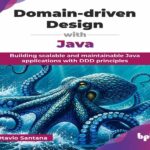

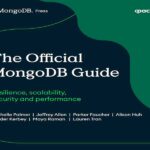
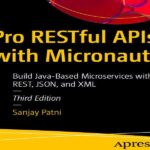

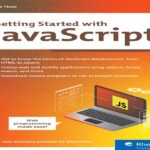




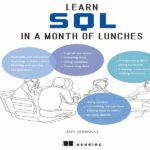


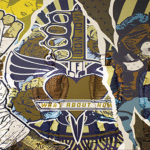

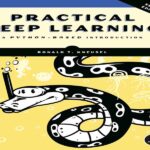





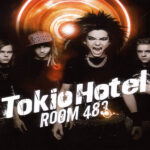









نظرات کاربران